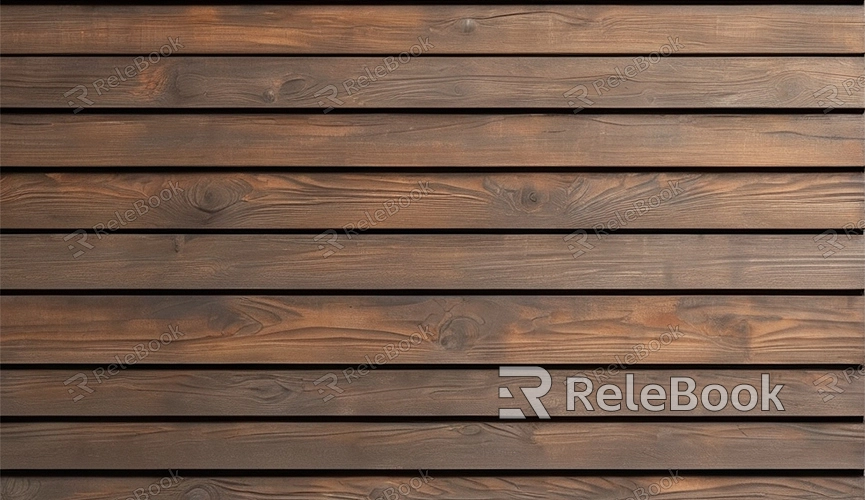Siding Texture in Blender
Siding texture is a common type of texture used to simulate the surface texture of house exteriors, adding decorative effects to buildings. In Blender, using siding texture can add detail and realism to architectural models.
This 3D texture can be downloaded from Relebook and applied to 3D models or scene rendering through the following steps:
1. Import Texture: Import the siding texture material into the Blender project.
2. Apply to Model: Apply the texture to the exterior surface of the architectural model, ensuring the model is ready to receive the texture.
3. Adjust Mapping: Based on the dimensions and shape of the architectural model, adjust the texture mapping to achieve a natural effect on the model surface.
4. Adjust Material Parameters: Depending on the need, adjust the texture parameters such as color, glossiness, reflection, etc., to achieve the desired exterior effect.
5. Add Details: Additional texture layers can be added or the node editor can be used to enhance the texture and details of the siding, making it more realistic and vivid.

Different parameter adjustments yield different rendering effects. Here are common rendering scenarios for this 3D texture in Blender:
1. Residential Exterior Decoration: Used to simulate siding decorations on residential exteriors, enhancing the decorative and aesthetic appeal of buildings.
2. Commercial Building Exterior Decoration: Suitable for siding decorations on commercial building exteriors, such as shops, restaurants, etc., providing a unique appearance to the building.
3. Rural House Renovation: Applying siding decorations to rural house exteriors to create a countryside architectural style.
4. Landscape Design: Used to simulate wall decorations in landscape design, such as garden fences or architectural exteriors in scenic areas, enhancing the beauty and attractiveness of landscapes.
5. Architectural Rendering: Applying siding texture in architectural rendering to increase the realism and three-dimensionality of architectural models.
Using siding texture (siding texture) in Blender is essential for enhancing the realism and details of architectural models, especially in architectural visualization and environmental design. Siding, as a common covering material for building exteriors, not only provides protection but also adds visual appeal to buildings aesthetically. Here are the main roles of siding texture in Blender:
Enhancing Realism: Siding texture can simulate siding materials such as wood, metal, plastic, or stone, providing a high level of realism to 3D architectural models. These textures reproduce the natural textures, color variations, and weather-induced aging effects of siding.
Improving Visual Effects: Using high-quality siding texture can significantly enhance the visual effects of architectural models, making them more visually appealing and memorable. The details and textures provided by siding texture add depth and complexity to the architectural appearance.
The application of siding texture in Blender adds detail and realism to architectural models. Through proper parameter adjustments and texture application, various effects can be achieved to enhance the visual quality and appeal of architectural models. If you need many high-quality 3D textures and HDRI, or 3D model downloads, you can download them directly from Relebook and import the textures and 3D models into your project for immediate use.

